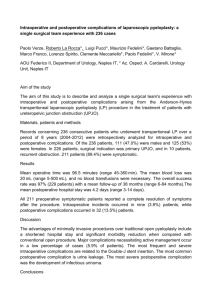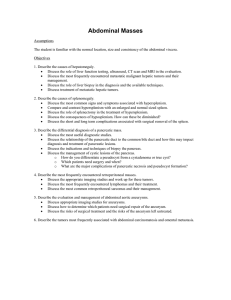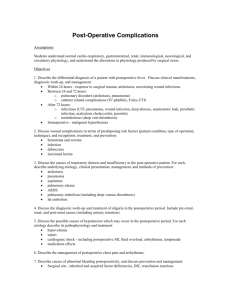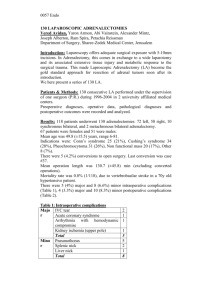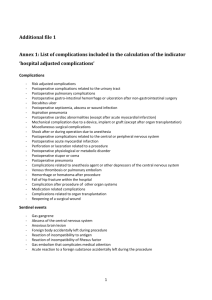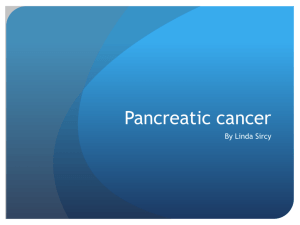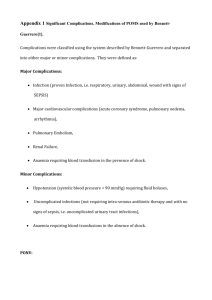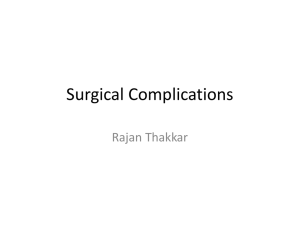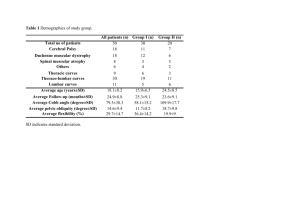BACKGROUND/AIMS: Surgical resection remains
advertisement
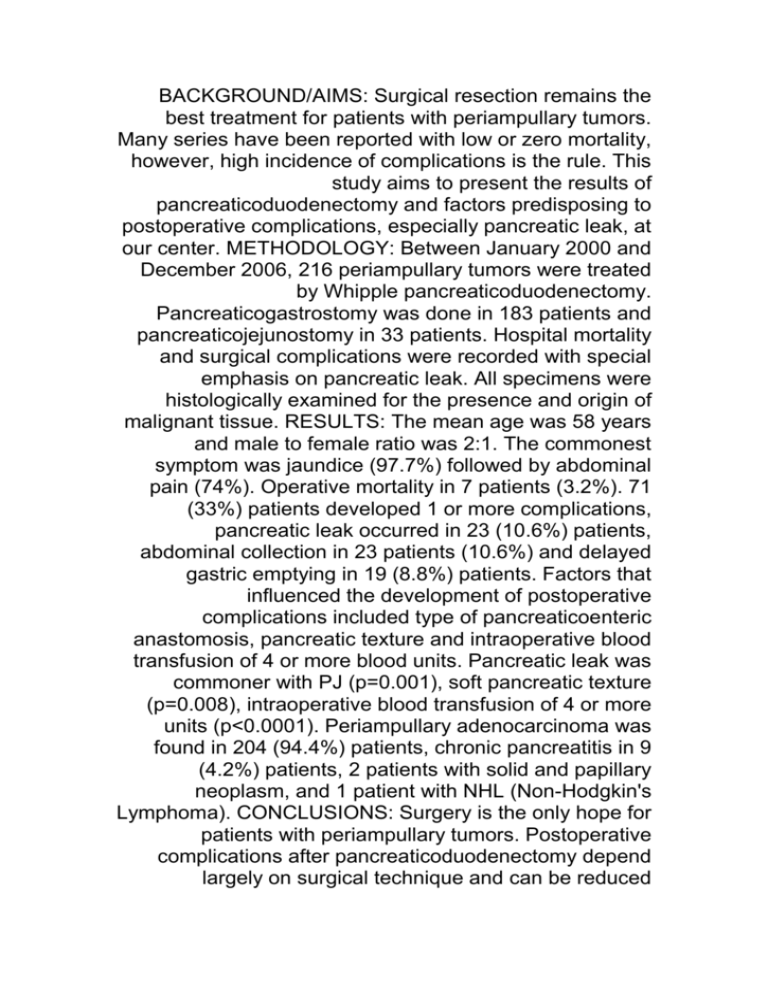
BACKGROUND/AIMS: Surgical resection remains the best treatment for patients with periampullary tumors. Many series have been reported with low or zero mortality, however, high incidence of complications is the rule. This study aims to present the results of pancreaticoduodenectomy and factors predisposing to postoperative complications, especially pancreatic leak, at our center. METHODOLOGY: Between January 2000 and December 2006, 216 periampullary tumors were treated by Whipple pancreaticoduodenectomy. Pancreaticogastrostomy was done in 183 patients and pancreaticojejunostomy in 33 patients. Hospital mortality and surgical complications were recorded with special emphasis on pancreatic leak. All specimens were histologically examined for the presence and origin of malignant tissue. RESULTS: The mean age was 58 years and male to female ratio was 2:1. The commonest symptom was jaundice (97.7%) followed by abdominal pain (74%). Operative mortality in 7 patients (3.2%). 71 (33%) patients developed 1 or more complications, pancreatic leak occurred in 23 (10.6%) patients, abdominal collection in 23 patients (10.6%) and delayed gastric emptying in 19 (8.8%) patients. Factors that influenced the development of postoperative complications included type of pancreaticoenteric anastomosis, pancreatic texture and intraoperative blood transfusion of 4 or more blood units. Pancreatic leak was commoner with PJ (p=0.001), soft pancreatic texture (p=0.008), intraoperative blood transfusion of 4 or more units (p<0.0001). Periampullary adenocarcinoma was found in 204 (94.4%) patients, chronic pancreatitis in 9 (4.2%) patients, 2 patients with solid and papillary neoplasm, and 1 patient with NHL (Non-Hodgkin's Lymphoma). CONCLUSIONS: Surgery is the only hope for patients with periampullary tumors. Postoperative complications after pancreaticoduodenectomy depend largely on surgical technique and can be reduced reasonably with the adoption of pancreaticogastrostomy, which is safer and easier to learn than pancreaticojejunostomy.


